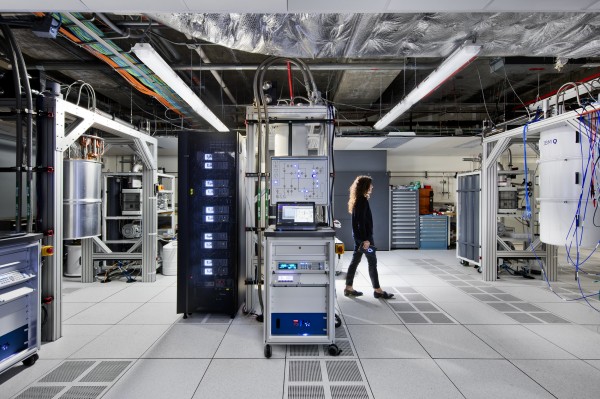Quantum Computers Barely Exist—Here’s Why We’re Writing Languages for Them
Programming languages for classical computers are designed in a way that doesn’t require developers to know how a central processing unit works. The push now is to create high-level quantum programming languages that also shield developers from the complexities of quantum hardware. The quirks of quantum computing create limitations that don’t exist in classical programming languages. One example: quantum programs can’t have loops in them that repeat a sequence of instructions; they have to run straight through to completion. To deal with such issues, Q# works in conjunction with a couple of classical languages. Developers without quantum expertise can write their main programs in familiar languages and then use a Q# program when they want to engage quantum processing power.
This ICO is disrupting the Financial Services Industry
TrakInvest faced a rising demand from its community to move to blockchain and launch its own cryptocurrency. This currency known as the “TRAK” Token is based on Ethereum ERC20 standards. The token launch will introduce a reward economy where the producers of trading data, insights and sentiments will be globally rewarded in a transparent and frictionless manner. Backed by a powerful tech stack and the strength of Ethereum’s Open community network, the ecosystem has a strong technical foot holding.“The concept of social trading and the concept of cryptocurrency came together nicely because now we could actually set an incentivisation and a monetisation model not only for TrakInvest but also for its users” says Mr. Bobby Bhatia, Founder & CEO, TrakInvest TrakInvest will develop its current virtual equity trading platform to include virtual trading and simulation games for cryptocurrencies. TrakInvest will also launch AI powered Sentiment analysis tool for both equities and crypto-currencies.
Are The Benefits Of Blockchain Out Of Reach For Small And Mid-Size Businesses?

The chain is a program designed to execute tasks exactly as specified at the onset, without a designated moderator or manager. Instead, the chain is validated and monitored by each user within the network. The blockchain records transactions and duplicates them instantly across each user point. It’s this deceptively simple concept that serves as the foundation for expedited and trustworthy transactions. The exchange of money for goods or services goes back thousands of years to the earliest civilizations. Initially, transparency and assurance were easily attained. Things were tangible. You could see and touch items in the marketplace. However, as technology evolved, trust in the marketplace eroded in favor of the convenience that checks, credit cards and other monetary assets have ushered in. Blockchain offers the intimacy and speed of a peer-to-peer experience and the verification and security previously provided only third-party authorities.
Best Practices for Managing Enterprise Data Streams
It has been commonplace to write custom code to ingest data from sources into your data store. This practice is dangerous given the dynamic nature of big data. Custom code creates brittleness in dataflows where minor changes to the data schema can cause the pipeline to drop data or fail altogether. Also, since instrumentation must be explicitly designed in and often isn’t, dataflows can become black boxes offering no visibility to pipeline health. Lastly, low-level coding leads to tighter coupling between components, making it difficult to upgrade your infrastructure and stifling organizational agility. Today, modern data ingest systems create code-free plug-and-play connectivity between data source types, intermediate processing systems (such as Kafka and other message queues) and your data store. The benefits you get from such a system are flexibility instead of brittleness, visibility instead of opacity, and the ability to upgrade data processing components independently.
ML & AI: Main Developments in 2017 and Key Trends in 2018

If we look at the engineering side of AI, the year started with Pytorch picking up steam and becoming a real challenge to Tensorflow, especially in research. Tensorflow quickly reacted by releasing dynamic networks in Tensorflow Fold. The “AI War” between big players has many other battles though, with the most heated one happening around the Cloud. All the main providers have really stepped up and increase their AI support in the cloud. Amazon has presented large innovations in their AWS, such as their recent presentation of Sagemaker to build and deploy ML model. It is also worth mentioning that smaller players are also jumping in. Nvidia, has recently introduced their GPU cloud, which promises to be another interesting alternative to train Deep Learning models. Despite all these battles, it is good to see that industry can come together when necessary.
How to Create a Digital Marketing Predictive Analytics Model

What if a predictive analytics model could track and capture data related to all the content touch points that a customer interacts with before making a purchase, assign weights to each, and assign proportions of customer’s purchase numbers to each to calculate ROIs? With tools like Content Scoring, that’s possible. It uses CRM data and marketing automation to track customer journeys, and then assigns values to content touch points such as whitepapers, social media posts, blogs, emails, and e-books) to help you understand which marketing deliverables do and don’t work. Imagine the kind of sophisticated, targeted, and optimized content funnels you could create to connect prospects to products using such advanced tools. Though predictive models can result in predictable response rates, they don’t necessarily explain why response rates depend on certain factors.
Analytics in 2018: AI, IoT and multi-cloud, or bust

Kinetica's Negahban predicts that "Organizations will look for / demand a return on their IoT investments" and adds that "while it is a good start for enterprises to collect and store IoT data, what is more meaningful is understanding it, analyzing it and leveraging the insights to improve efficiency." This reminds us that IoT, Big Data analytics and machine learning are rather inseparable. The IoT enthusiasm among our predictors doesn't stop there. In an age when so any customer interactions are electronic, Ryan Lester, Director of Customer Engagement Technologies, at LogMeIn, insists that "IoT Will Save Consumer Brands." He adds that "embracing IoT at the time of customer engagement helps companies to create relationships with their customers and create an ongoing engagement that will help them better understand their customers' needs..."
This AI Learns Your Fashion Sense and Invents Your Next Outfit
Despite the current limitations, fashion seems ripe for an AI invasion; it’s an arena that has great data sets on customers’ interests, and there is a lot of money at stake. Amazon, for one, is already working on AI systems to provide a leg up in spotting fashion trends, and it has also done some work with GANs. Alibaba, meanwhile, just debuted FashionAI, a technology that can recommend items to shoppers on the basis of what they brought into the dressing room. Costa Colbert, the chief scientist at Vue.ai, a fashion AI startup that recently revealed a method for creating fake fashion models using GANs, says that as promising as the UCSD and Adobe research appears to be, it requires so much data that it might be helpful only for the biggest names in online retail. “If all the person does is come in and click one thing, you aren’t going to be able to do much,” Colbert says.
Products Over Projects
Product-mode is no longer limited to companies that sell software. It is common among so-called tech businesses enabled by tech platforms that stream content, e-tail, distribute mutual funds, find cabs, accommodation, flights, you name it. It is also catching on in the digital/product/engineering/IT departments at more traditional, old-guard businesses. For instance, Insurance Australia Group (IAG) recently moved away from projects to a more durable platform organization operating in product-mode. ANZ Bank is trying something similar. There are several, less-than-ideal variations of teams operating in product-mode. Some places use a halfway approach of project-mode funding and product-mode organization. Even the product-mode organization is not always build+run. Or the cross-functional teams consist of people reporting to different function heads.
10 Ways Cloud Computing Will Evolve In 2018
Spending on cloud services demonstrates just how rapidly usage has grown. In 2015, Gartner predicted that, globally, enterprises would spend $140 billion on on-premises data center systems. Since then, the rapid adoption of public and private cloud services has sparked a major reallocation of IT budgets. Enterprises are moving away from relying solely on on-premises data center systems and are boosting spending on IT infrastructure for deployment in cloud environments. The result, according to IDC, is that cloud services and infrastructure spending will reach $266 billion annually by 2021. The picture is even more complicated than that. Businesses are using and deploying private, public and hybrid clouds in a number of ways, shaping the direction of the space over the next 12 months.
Quote for the day:
"You don't always win your battles, but it's good to know you fought." -- Lauren Bacall

No comments:
Post a Comment